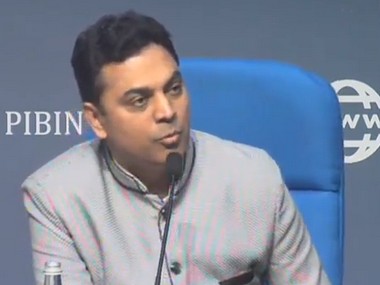One interesting thing in the Economic Survey 2020 is that Chief Economic Adviser (CEA) Krishnamurthy Subramanian has devoted an entire chapter to play down the doubts raised by his predecessor, Arvind Subramanian on the accuracy of the country’s GDP estimates. In 2019, former CEA Arvind Subramanian had triggered a controversy arguing that he has evidence to show India’s new Gross Domestic Product (GDP) series is flawed and grossly overestimated by at least 2.5 percent. Subramanian cited several economic indicators between the period between 2011-12 and 2016-17 to validate his argument. The former CEA later, in a study, had said that the evidence, based on disaggregated data from India and cross-sectional/panel regressions, is robust to prove his argument. [caption id=“attachment_7984131” align=“alignleft” width=“380”] Chief Economic Adviser K Subramanian. PIB[/caption] “Lending further credence to the evidence, part of the overestimation can be related to a key methodological change, which affected the measurement of the formal manufacturing sector,” Subramanian had said. But, in the Economic Survey 2020, the current CEA strongly counters this argument. “The analysis in the chapter clearly shows that the evidence in favour of an overstated Indian GDP disappears completely in a correctly specified econometric model,” he says, adding, “Using a cross-country, generalised difference-in-difference model with fixed effects, the analysis demonstrates the lack of any concrete evidence in favour of a misestimated Indian GDP,” the CEA says. Missing targets? The Economic Survey has projected a 6-6.5 percent GDP growth for 2020-21. But, there will be much skepticism on this number given that in the last survey, the growth was projected at 7 percent whereas the actual growth is likely to end up around 5 percent. Hence it is only logical that this year’s prediction will be accepted by economists with a pinch of salt. The message from the survey to the government, fighting an economic slowdown, is to loosen the purse strings and do what is needed at this point—spend as much as possible. The government will have to prioritise growth and not fiscal consolidation, the survey says. The question is whether the government shares the same view. And, what’s ultimately come out when Union Finance Minister Nirmala Sitharaman unveils the Budget document on Saturday (1 February). So far, there are no indications from the government that it will significantly step up spending to support growth. It is more worried about deviation from the fiscal roadmap. The survey also cautions the government on slow pace of governance reforms in the state-run banks. All eyes on Budget As this writer argued in an earlier column, the economic growth is dragged by a poor show in the manufacturing sector, lower revenue collections hampering the ability of the government to ramp up spending and the absence of consumer demand in Asia’s third-largest economy. Worsening global conditions add to the woes. There is a likelihood of economic growth falling further since government spending, which has been aiding growth in recent quarters is unlikely to continue in the last quarter on account of the government’s tight financial position. It is in this backdrop that Sitharaman will present her second Budget on Saturday. If one goes through the data, it can be found that growth in private consumption has fallen sharply over the last five quarters. In the second quarter, it grew just 7.8 percent compared with 14.4 percent in the same quarter of the previous fiscal year. Compared with this, government consumption has stayed at nearly the same level of 15-18 percent in the last twelve months. The high government spending was essentially supporting GDP growth. But, as mentioned above, it is doubtful if the government can maintain this momentum in the months ahead due to a revenue shortfall. Over to the finance minister now.
The Economic Survey has projected a 6-6.5% GDP growth for 2020-21. But, there will be much skepticism on this number given that in the last survey, the growth was projected at 7% whereas the actual growth is likely to end up around 5%.
Advertisement
End of Article


)

)
)
)
)
)
)
)
)



